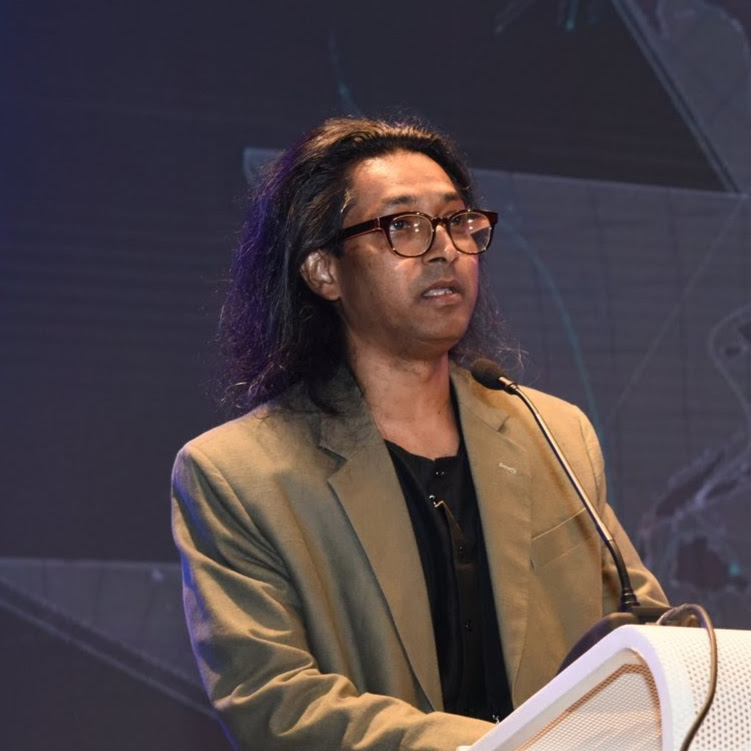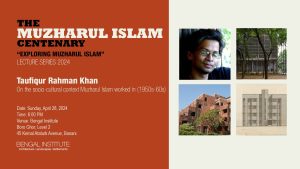
Bengal Institute at the Seoul Biennale of Architecture and Urbanism 2019
Sat 7 Sep - Sun 10 Nov' 19
Bengal Institute is participating in the Thematic Exhibition “Collective City” at the 2019 Seoul Biennale for Architecture and Urbanism. Designed and curated by Salauddin Ahmed, the installation celebrates the lives of millions of “micro-urbanists” who bring vibrancy and color to Dhaka city. The installation is a collaboration among Salauddin Ahmed, Marina Tabassum, who was initially invited to the Biennale, and Bengal Institute.
The 2019 Seoul Biennale of Architecture & Urbanism opened on 7th September 2019. The event will be held in several venues across the city of Seoul, including Zaha Hadid Architects’ Dongdaemun Design Plaza.
The Seoul Biennale first took place in 2017 and has been finding its own place in the international architectural scene for bringing valuable themes and discussions into today’s architecture and urbanism agenda. This year’s Biennale, directed by Jaeyong Lim and Francisco Sanin, under the main theme “Collective City,” will present thorough research and debate on the future of cities around the world.
Enclosed under the main theme, this year’s edition presents four major components. The “Thematic Exhibition,” curated by architect Beth Hughes, will be an invitation to think what is our idea of a collective city, it will be the place to redefine and reimagine the structure of our cities through the participant’s works of research, critique, and exploration.
Until 10th of November, the city of Seoul will be host to a wide variety of participants from very diverse disciplines, not only from architecture and urbanism but also, the arts and literature to sociology and economics. The event’s program includes exhibitions, symposiums, and lectures, and participatory events merged with the city itself, such as walking tours and discovery activities throughout Seoul’s neighborhoods.
The Seoul Biennale will be a two-month celebration of cities in the city. Creating a close connection with Seoul’s citizens and visitors, it will trespass the borders of the exhibition space itself and bring the discussions into the public while encouraging everyone to be active participants of the conversation.
Bengal Institute’s participation in the SBAU 2019
While we were brainstorming about how to represent Dhaka at the SBAU exhibition, Dhaka’s thriving dynamic of street-based small entrepreneurs who we call the “micro-urbanists” became the core focus of our installation. Which Kazi Khaleed Ashraf thematized as:
Dhaka: A Million Stories
Cities are not merely the buildings and spaces, cities are us. We make cities in the shadow of ourselves. We are the city!
What Renzo Piano said about New York is true for Dhaka that “cities are wonderful because they are living expressions of complexity, built by time and a million stories.”
“Dhaka,” the international tourist guide Lonely Planet describes rather lyrically, “is a giant whirlpool that sucks in anything and anyone foolish enough to come within its furious grasp. Around and around it sends them, like some wildly spinning fairground ride bursting with energy. Millions of individual pursuits constantly churn together into a frenzy of collective activity – it is an urban melting pot bubbling over.”
Dhaka is miserable, mischievous, ruthless, or ingenious, engaging, or dynamic. When you reach Dhaka, you arrive at the heart of 20 million intimacies, anxieties, and anticipations. Twenty million stories. Each one is an architectural and spatial narrative that is waiting to be told.
We wish to present the variegated dimension of this whirl-a-gig city in our installation “Dhaka: A Million Stories.”
The literal meaning of Dhaka, ironically, is concealed. In a paradoxical way, our installation at SBAU 2019 will reveal – or unconceal – the concealed city. Like most metropolitan development vying for the control of capital and land, Dhaka is a socially and spatially heterogeneous place. Which makes for not one but many Dhakas, with each representing a certain social, economic, and environmental destiny. But there is also a city that operates within, beyond and between these morphologies, a city that is kinetic, fluid and constituted by a million small practices.
Often invisible but clearly vital, this meta-morphology spreads out across the city weaving in and out of the “fixed” morphologies, along the railway tracks, between buildings, on the sidewalks, and the flood dams, eked out by fresh migrants, vagrants, poets, and generally by people at the periphery of official planning. We propose mapping this vagabond landscape – the impromptu commons, interstitial situations, illicit junctions, invisible knots, and unscripted applications – which penetrates and perforates the planned city, the city of codes and byelaws, and builds alternative modes of practice that self-organizes into a “collective of the invisible.” We follow the protagonists – the micro-urbanists – who in their small-scaled gestures and practices produce this dynamic city. Combining wisdom and cunning, practices that remind us of the Greek sense of metis, the performance of micro-urbanists, whether in the form of a shop in the crevice of a building, a woman with a sewing machine on a sidewalk, a workshop on bikes for sharpening knives, or a home in a tree, denotes varieties of exchange, negotiation, entrepreneurship, inventiveness, subterfuge, subversion, skills and various forms of “design” for inhabiting the city.
Photos from Seoul
Name of the organization/artist: Bengal Institute for Architecture, Landscapes and Settlements, Dhaka, Bangladesh
Represented by Marina Tabassum, Director Academic Program, Bengal Institute
Curator and Designer: Salauddin Ahmed, Principal Architect at Atelier Robin Architects, and Director Curatorial Program at Bengal Institute
Installation Directors: Kazi Khaleed Ashraf and Marina Tabassum
Exhibition Date: 7th September to 10th November, 2019
Photos by Salauddin Ahmed, Tae Yoon Kim.
Short link to this page for easy sharing: http://bit.ly/BISBAU
Publication






